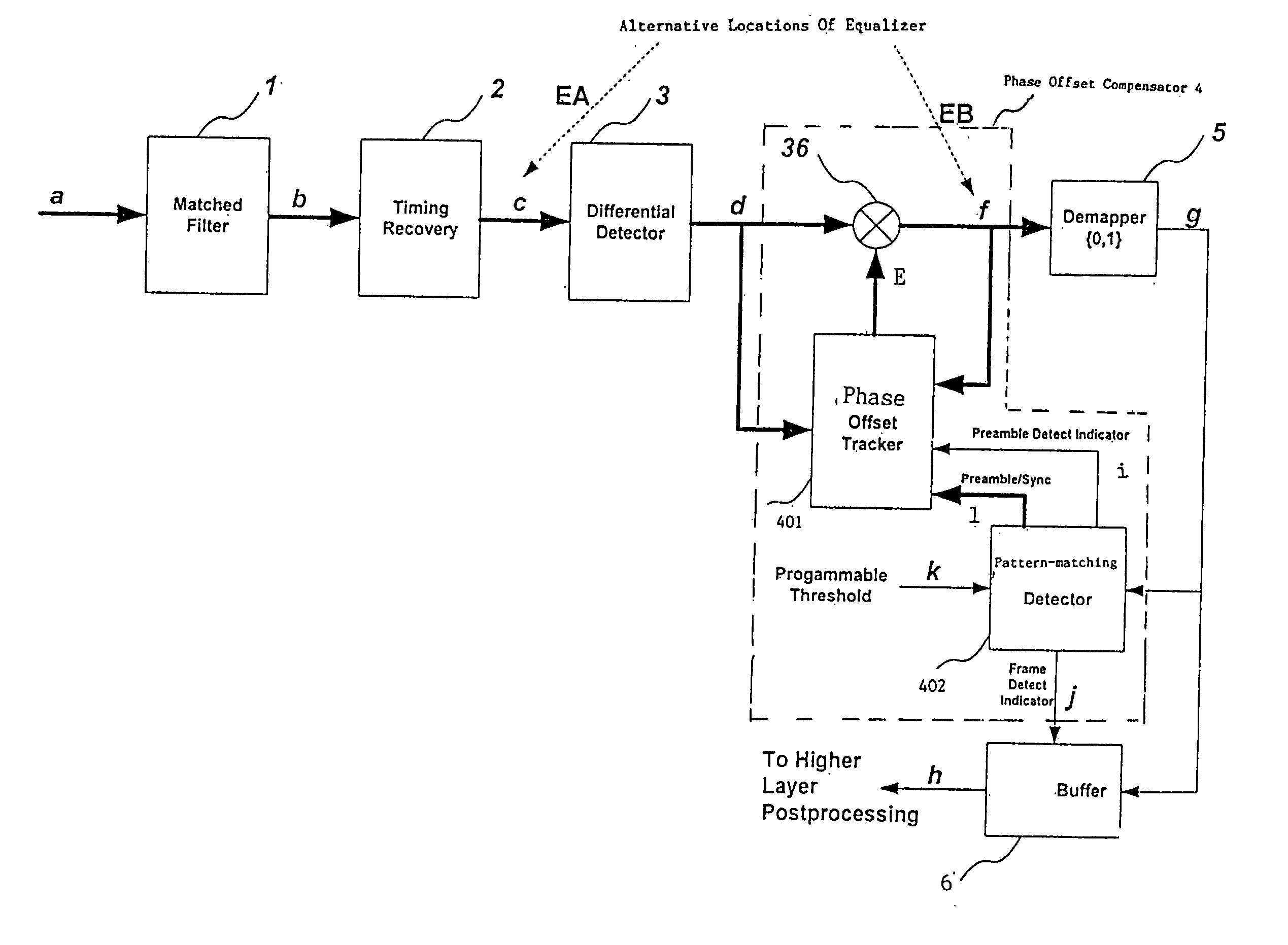Digital radio receiver
a radio receiver and digital technology, applied in the field of digital radio receivers, can solve the problems of inability to achieve the same distance, and inability to reliably recover original information, so as to reduce the complexity of the receiver, reduce the cost, and simplify the structure and cost-effective
- Summary
- Abstract
- Description
- Claims
- Application Information
AI Technical Summary
Benefits of technology
Problems solved by technology
Method used
Image
Examples
first embodiment
[0036]FIG. 2 shows a packet format of a signal received by a receiver of the present invention. It comprises repetitive preamble sequences to aid the receiver algorithms for Automatic Gain Controlled (AGC) control, timing recovery, phase-offset recovery and signal equalization. A Synchronization Pattern (Sync) is also included to aid frame synchronization so that relative positions of Header and Payload can be determined.
[0037]FIG. 3 schematically illustrates a first embodiment of a receiver of the present invention. The received signal (through line a) is first filtered through a Matched Filter 1, typically a square-root-raised cosine filter. The filtered signal (through line b) is then coupled to a Timing Recovery Loop 2. As mentioned before, the Timing Recovery Loop 2 recovers the received symbols so that they are both phase and frequency matched to the transmitter clock. The Timing Recovery Loop 2 outputs the timing-corrected samples at symbol rate to a Differential Detector 3 ...
second embodiment
[0067]FIG. 13 schematically illustrates a second embodiment of a receiver of the present invention. As shown in FIG. 13, the second embodiment of the receiver includes a matched filter 1 for filtering a received signal to remove the out-of-band noise, a timing recovery module 2 for recovering the filtered signal to output timing corrected symbols, a differential detector 3 for differentially demodulating the timing corrected symbols, a phase offset compensator 4 for compensating the phase offset existing in the neighboring detected symbols which includes a phase offset tracker 401, a phase-matching detector 402′ and a multiplier 36, a buffer 6 for storing the phase offset compensated symbols from the compensator 4 and a demapper 5 for decoding the data from the buffer 6. The difference between the first and second embodiments of the receiver of the present invention is the position of the demapper, and the structure of the phase-matching detector 402′, which is modified accordingly ...
PUM
 Login to View More
Login to View More Abstract
Description
Claims
Application Information
 Login to View More
Login to View More - R&D
- Intellectual Property
- Life Sciences
- Materials
- Tech Scout
- Unparalleled Data Quality
- Higher Quality Content
- 60% Fewer Hallucinations
Browse by: Latest US Patents, China's latest patents, Technical Efficacy Thesaurus, Application Domain, Technology Topic, Popular Technical Reports.
© 2025 PatSnap. All rights reserved.Legal|Privacy policy|Modern Slavery Act Transparency Statement|Sitemap|About US| Contact US: help@patsnap.com



